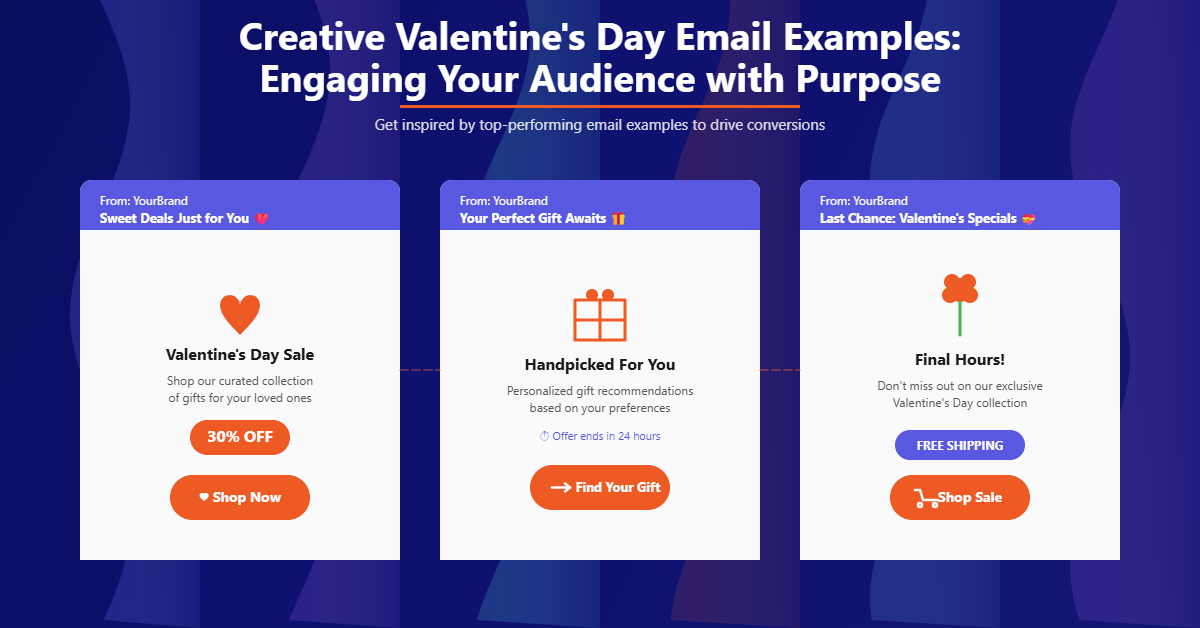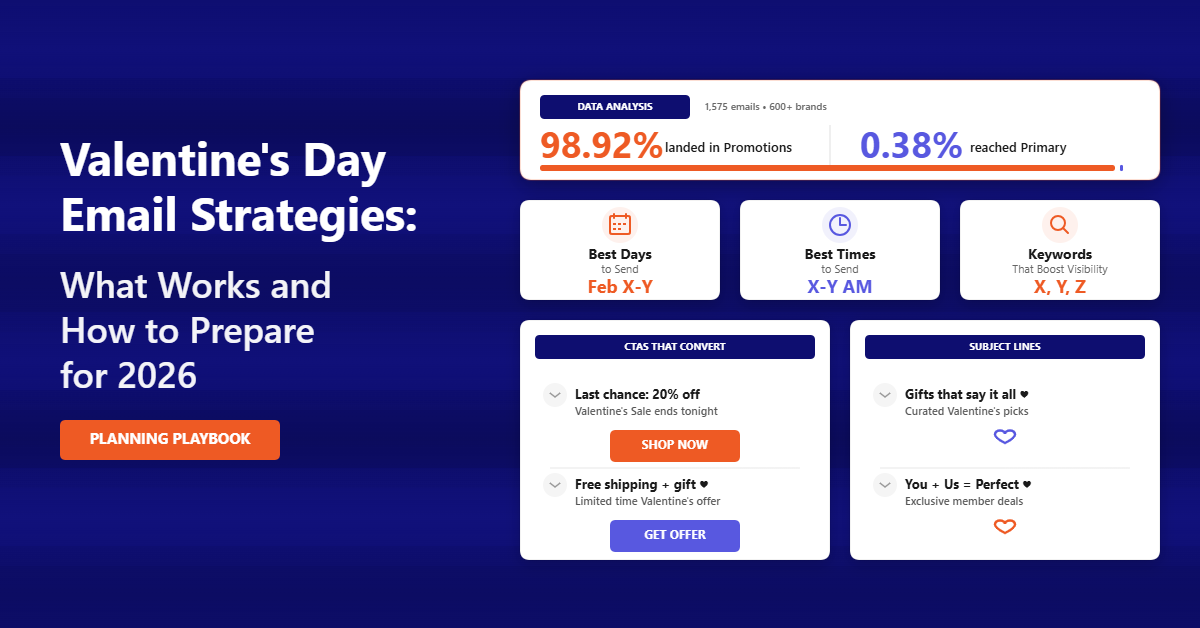A new visitor lands on your e-commerce site finds something intriguing, and signs up for your newsletter. What happens next?
In inboxes flooded with promotions and sales pitches, a good welcome email is your chance to look real and set the stage for a long-term relationship. In this guide, learn why welcome emails are so crucial, explore 10 different types of welcome emails to new customers you should consider, share best practices, and even find the right tools to automate your welcome series.
Whether you’re an e-commerce store owner or an email marketer, this post is for you. Let’s dive into how you can maximize engagement and conversions right from the first email.
Why Welcome Emails Matter for E-commerce Stores
When someone signs up for your email list, it’s more than just a subscriber. It’s an opportunity. Welcome emails are unique because they consistently deliver 4x higher open rates compared to other promotional emails. That’s not by chance. Here’s why they’re so effective.
First Impressions Count
When new subscribers receive your welcome email, they’re not expecting a hard sell. They’re looking for a warm introduction. This is your chance to show them who you are, what you stand for, and how you can serve them. Start off friendly and approachable as a brand.
Building a Connection Early
A welcome email is the first step in nurturing a long-term relationship. By providing valuable content, telling your brand story, or offering a special incentive, you pave the way for better retention and increased lifetime value. This early connection can lead to repeat purchases and loyal customers over time.
Guidance for What’s Next
Effective welcome emails outline what subscribers can expect in the future—be it newsletters, exclusive offers, or educational content. This clarity reduces subscriber uncertainty and increases the likelihood that they will engage with subsequent emails.
Best Practices at a Glance
When designing your welcome email, focus on personalization, a clear call-to-action (CTA), and consistent branding. These elements not only make your email visually appealing but also ensure that it resonates with your new subscribers.
10 Types of Welcome Emails to New Customers
Now that we’ve covered why welcome emails are essential, let’s break down the 10 types of welcome emails to new customers every e-commerce store should consider. Each type has its unique benefits, and when executed correctly, can result in increased engagement, and stronger customer relationships.
1. The Classic ‘Thank You for Subscribing’ Email
This is the bread and butter of welcome emails. A straightforward thank-you message shows gratitude and acknowledges the subscriber’s action. A classic thank-you email is designed to confirm the subscription and set the stage for what’s to come. Writing thank you emails help set your brand personality and set a warm and welcoming tone.
Best Practices & Key Elements
Keep it Friendly: Use a conversational tone that reflects your brand’s personality.
Set Expectations: Briefly mention what subscribers can expect—be it updates, promotions, or content.
Offer a Next Step: Include a subtle CTA like “Browse our latest collections” or “Check out our blog.”
2. The ‘Brand Story’ Welcome Email
This type goes beyond a simple thank you by delving into your company’s narrative. It places your brand at the center of attention and creates an emotional connection. A ‘brand story welcome email’ shares your company’s history, values, and mission. It’s your chance to tell potential customers what makes you unique.
Best Practices & Key Elements
Share Your Founding Story: Explain why your brand exists and the journey that led you to where you are today.
Highlight Core Values: Let subscribers know what you stand for, whether it’s sustainability, innovation, or community.
Use Compelling Visuals: Incorporate high-quality images or even a short video to bring your story to life. An AI image enhancer can elevate the clarity, lighting, and overall quality of your visuals, making them look more polished and professional. This helps your content stand out and creates a stronger emotional impact on viewers.
3. The ‘Exclusive Offer’ Welcome Email
Sometimes, the best way to entice a new subscriber is to give them something special right off the bat. An exclusive offer email rewards new subscribers with a discount, free shipping, or another incentive to make a first purchase.
Best Practices & Key Elements
Clear and Compelling CTA: Make sure the offer is front and center.
Urgency: Use language that implies a limited-time offer to encourage immediate action.
High-Quality Visuals: Display your product or offer in an appealing manner.
4. The ‘Product Highlight’ Email
This email type focuses on showcasing your best-selling or trending products, acting as a subtle introduction to your offerings. A product highlight email familiarizes new subscribers with your products without being overly salesy. It’s about visually enticing them with what you have to offer.
Best Practices & Key Elements
Visually Engaging: Use high-quality images and concise copy to highlight products.
Social Proof: Incorporate customer reviews or ratings to build credibility.
Easy Navigation: Ensure that there are clear links or buttons directing subscribers to product pages.
5. The ‘Educational Content’ Welcome Email
Informing is often more effective than selling, especially when you’re just starting to build a relationship. An educational content email provides valuable insights—think how-to guides, styling tips, or usage instructions—that are directly related to your products.
Best Practices & Key Elements
Concise Yet Informative: Keep the content digestible while ensuring it adds value.
Link to More Resources: Offer links to longer guides or blog posts for those who want to dive deeper.
Engaging Visuals: Use infographics or illustrative images to complement the written content.
6. The ‘Social Proof & Community’ Email
Building trust is critical, and what better way to do that than by showing your new subscribers that others love your brand? This email leverages customer reviews, testimonials, or user-generated content (UGC) to validate your brand and create a sense of community.
Best Practices & Key Elements
Feature Real Stories: Use genuine customer feedback and success stories.
Incorporate Visuals: Display photos or videos of customers using your products.
Engage on Social Media: Encourage subscribers to follow your social channels to become part of the community.
7. The ‘Referral & Loyalty Program’ Email
Why not turn your new subscribers into brand advocates right from the start?
A referral and loyalty program email incentivizes subscribers to refer friends or sign up for a loyalty program by offering rewards or discounts.
Best Practices & Key Elements
Clear Incentives: Outline the benefits clearly—whether it’s discounts, points, or exclusive access.
User-Friendly Process: Make it easy for subscribers to share a referral link or join your loyalty program.
Fun and Engaging Tone: Keep the language light and encourage participation through friendly prompts.
Airbnb’s referral program email, which offers travel credits when friends sign up, is a prime example of how to turn new subscribers into enthusiastic promoters.
8. The ‘Personalized Welcome Email’
Personalization is more than just using the subscriber’s first name—it’s about creating a tailored experience based on available data. This email type uses customer data—such as preferences, browsing behavior, or purchase history—to deliver a customized welcome experience.
Best Practices & Key Elements
Dynamic Content: Utilize personalization tools to recommend products or content that aligns with the subscriber’s interests.
Name Inclusion: Address subscribers by their first name to create an immediate connection.
Relevant CTAs: Guide subscribers toward actions that are likely to resonate with them based on their behavior.
9. The ‘Multi-Step Welcome Series’ Email
Instead of relying on a single email, why not create a series that nurtures the relationship over time?
A multi-step welcome series breaks the introduction into several parts, gradually sharing your brand story, offers, product highlights, and educational content over a few days or weeks.
Best Practices & Key Elements
Structured Sequence: Start with a thank-you, follow up with your brand story, and then introduce products and offers.
Consistent Messaging: Ensure each email feels connected to the previous one while gradually building interest.
Timing is Key: Space out the emails to avoid overwhelming the subscribers while keeping them engaged.
10. The ‘Urgency-Based’ Welcome Email
Sometimes, creating a sense of urgency can prompt immediate action, which is especially useful when you want to convert a subscriber into a customer quickly.
An urgency-based welcome email leverages limited-time offers, countdown timers, or exclusive deals that require quick action.
Best Practices & Key Elements
Bold CTA: Ensure the call-to-action stands out and is unmissable.
Time-Sensitive Language: Use phrases like “limited time” or “act now” to encourage quick decision-making.
Visual Timers: Integrate countdown timers or dynamic banners to visually emphasize the urgency.
Best Practices for Writing High-Performing Welcome Emails
No matter which type of welcome email you write and send your customers, there are universal best practices. These will help ensure your email not only gets opened but engages. Here are some tips to keep in mind.
Personalization: Use your subscriber’s first name and, if possible, tailor content based on their preferences or browsing history. These personalized emails can make your campaigns feel much more intimate and relevant.
Compelling Subject Lines: A good email subject line is your first and only hook to engage your subscribers. Keep it short, engaging, and reflective of the content inside. A/B testing different subject lines can help determine what resonates best with your audience.
Clear CTAs: Whether you want your subscribers to shop, read a blog post, or check out a video, make sure your call-to-action is clear and easy to find. Use contrasting colors and actionable language.
Mobile-Friendly Design: With more than half of emails being read on mobile devices, your welcome emails need to look great on all screen sizes. Keep layouts simple and ensure text is legible on smaller screens.
A/B Testing: Experiment with different layouts, copy, and images. Testing various versions of your welcome email series will help you understand what drives the highest engagement and conversions over time.
Tools to Automate Your Welcome Emails
As your e-commerce business grows, manually sending welcome emails to each new subscriber becomes impractical. This is where automation tools come in to save you time, ensure consistency, and help you scale your email marketing efforts.
When it comes to higher deliverability, advanced segmentation, and comprehensive analytics, TargetBay stands out as the best choice for scaling your welcome email series.
With TargetBay, you’re not only automating your emails—you’re also getting insights that help you refine your strategy for maximum engagement. TargetBay platform is designed to handle everything from personalized recommendations to multi-step campaigns, ensuring that every email you send is as effective as possible.
Final Thoughts & Next Steps
We’ve covered a lot of ground—from the importance of welcome emails to the 10 different types you can use to build a lasting relationship with your customers. Here’s a quick recap.
First Impressions Matter: Your welcome email is your chance to make a great first impression. It sets the tone for all future communications and lays the foundation for a strong customer relationship.
Choose the Right Type: Whether you opt for a simple “Thank You” email, a compelling brand story, or an urgency-based offer, the key is to match the email type with your brand’s personality and your subscribers’ needs.
Follow Best Practices: Personalization, clear CTAs, mobile-friendly designs, and A/B testing are essential elements that ensure your welcome emails perform at their best.
Automate with Confidence: Using the right tools, like TargetBay, can significantly streamline your process and help you scale your email marketing efforts effectively. With advanced segmentation and detailed analytics, you can continuously refine your strategy for better results.
Think about the current state of your welcome email series. Are you using just one type of email, or are you missing out on opportunities to engage your subscribers more dynamically? Consider experimenting with one or two of the types we discussed.






